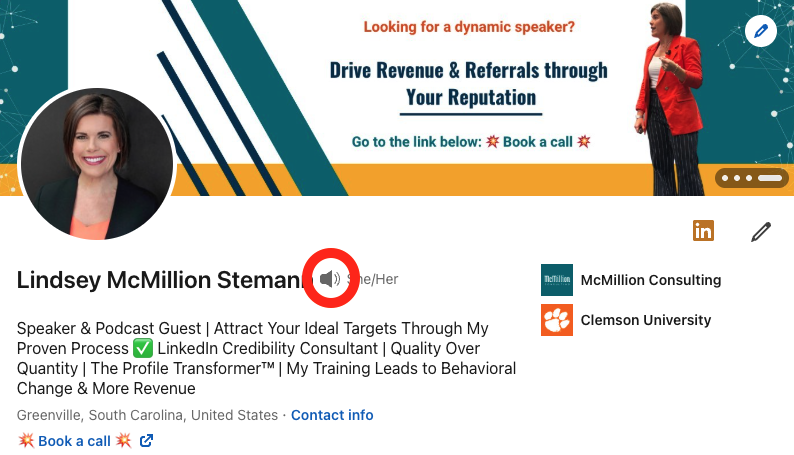How To Be A Good Host In Your Sales Process
Apr 16, 2024
Have you ever visited a friend and felt instantly at home? Or perhaps, you’ve been lucky enough to stay at a particularly hospitable hotel. From a warm greeting when you arrive to fresh guest linens and maybe even a mint on your pillow, all the little details taken together contribute toward a sense of ease. They show you that your host prepared for your arrival, anticipated your needs, and invested in ensuring your experience is pleasant.
Just like a good host or hostess, a strong salesperson prioritizes hospitality from the very first interaction with a prospect. Maybe you’re not having quite as many in-person sales conversations these days, but luckily, your hospitable touches don’t have to be fluffed pillows and towel swans. LinkedIn can help you collect all the information you need to make your prospects’ experiences comfortable and memorable.
Before any sales conversation—whether via email, phone, or face-to-face—take time to read through your prospect’s LinkedIn profile. Of course, review their work history, summary, and role descriptions if they have any, but also be on the lookout for these additional nuances.
1. Notice pronouns.
LinkedIn has the ability to include your preferred pronouns in your profile. This setting makes it easy to let either your first-degree connections or all LinkedIn members know how you identify.

If your prospect has taken the time to add pronouns, definitely take note. You can find pronoun selections in parentheses directly following a person’s name on the top of the LinkedIn profile, as well as in messages, posts, and comments.
If your prospects have not added pronouns, and you aren’t confident how they may prefer to be identified, don’t fret. To avoid guessing, you have a few options. First, see if they have received any LinkedIn recommendations from their network; their connections will use pronouns when writing the recommendation. If they have not received any recommendations, it's perfectly courteous to ask if a person feels comfortable sharing preferred gender pronouns toward the start of a conversation. This small gesture demonstrates your care and consideration.
Note: If you haven’t added your own pronouns to your profile, I recommend you do!
2. Notice name pronunciation.
Those of us who have somewhat tricky first or last names always appreciate it when people get it right (or at least try!). LinkedIn lets you add a voice recording to demonstrate how to pronounce your name. You can visit my profile for an example.

If your first thought about how to pronounce your prospect’s name is utter bewilderment, first check and see if there’s a name recording available at the top of his or her profile to reference. It could save you from an embarrassing or awkward introduction. After listening to the recording, go ahead and practice saying the name a couple of times before your call to get it right.
When in doubt, just ask. There’s no shame in being transparent about wanting to get a name right. Chances are, your prospect will be pretty forgiving, even if you don’t nail it the first time.
3. Notice prefixes and suffixes.
In your review of a person’s LinkedIn profile, don’t skim over prefix and suffix usage. It’s easy to assume the extra letters before or after people’s names are optional to include when addressing them, but some folks do prefer to be called by their complete professional titles.
Often, degree abbreviations and titles are included directly in a person’s LinkedIn name, but they also might be buried in the summary or role description sections. For example, you might find that a person’s summary is written in the third person and references “Dr. Anna” instead of just Anna.
Especially for folks with advanced degrees, be cognizant of the professional standards within a person’s industry. Titles like doctor, professor, and reverend may be more respectful or customary than simply assuming you should address people by their first names. Again, when in doubt, it never hurts to just ask, "Would you like me to refer to you as Dr. Anna or Anna?”
4. Notice naming differences.
An astute observer of a LinkedIn profile will notice any discrepancies between how a person’s name is listed and how other people on the platform address the person. For example, if a person is listed as “Thomas,” but recommendations and comments refer to the same person as "Tom,” you might have uncovered evidence that the person doesn’t actually go by his or her full name.
As with other preferences you uncover in your LinkedIn sleuthing, it never hurts to ask. Before you dive in confidently and say hi to “Deb” instead of “Deborah,” just point out that you picked up on the difference and would be happy to use whichever name the person prefers.
Here’s the thing about hospitality—when it’s present, it’s memorable. My husband Danny and I try to get away to one particular mountain inn nearby about once a year to relax and unwind. We keep coming back again and again because the service, attention to detail, and feeling of comfort are simply unmatched. A warm welcome stands out, so don’t underestimate it.
Being a good host in your sales process is more than being a nice person; it’s also strategic. All the little touches, whether you use the right name pronunciation the first time or have the courtesy to ask for help, can be the difference between a casual conversation and a sale.
Want to make your first impression really count? Don’t neglect to update your profile, too. Before the people on the other end of your message or invitation respond, they’ll probably check you out on LinkedIn first. Updating your profile is simple with The Ultimate LinkedIn Profile Examples Guide. In it, you’ll find more than 20 pages of inspiration from top-notch LinkedIn profiles.



